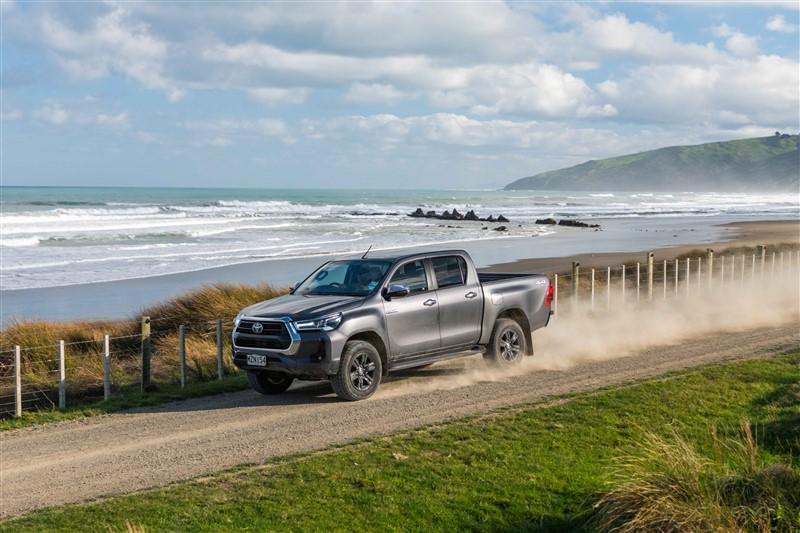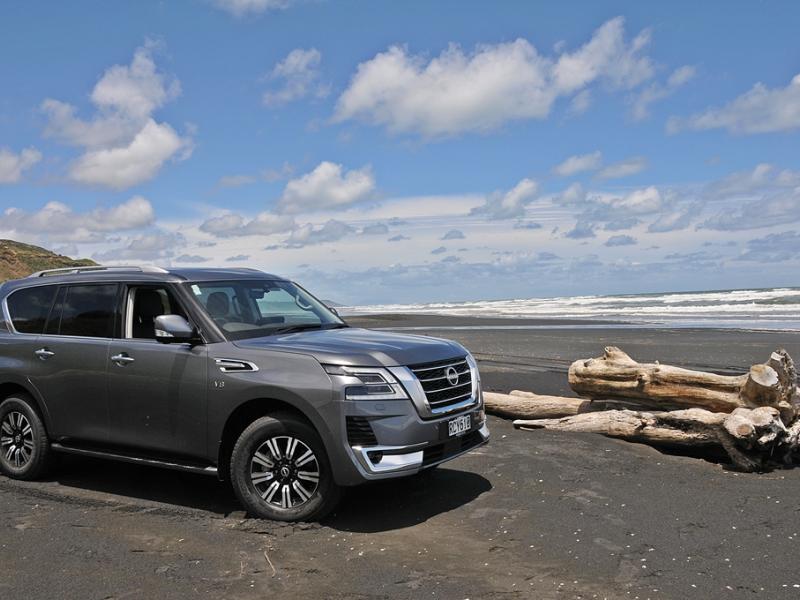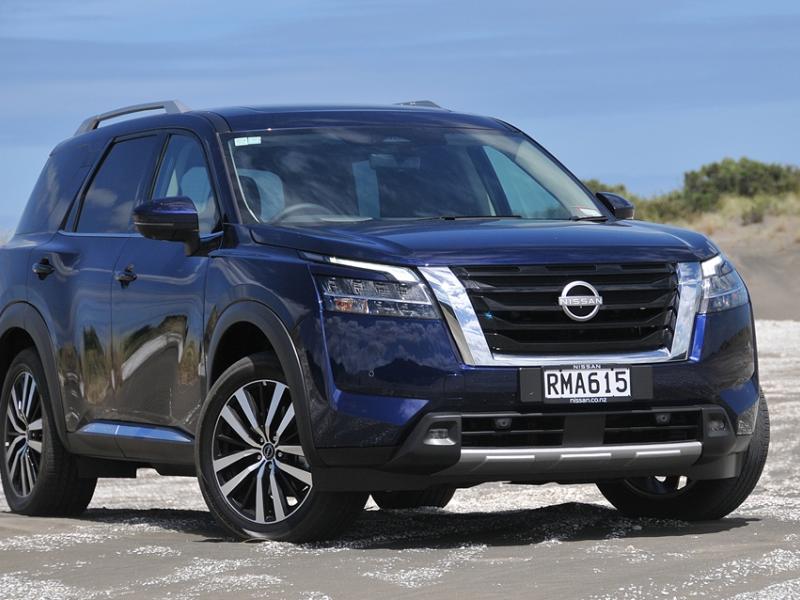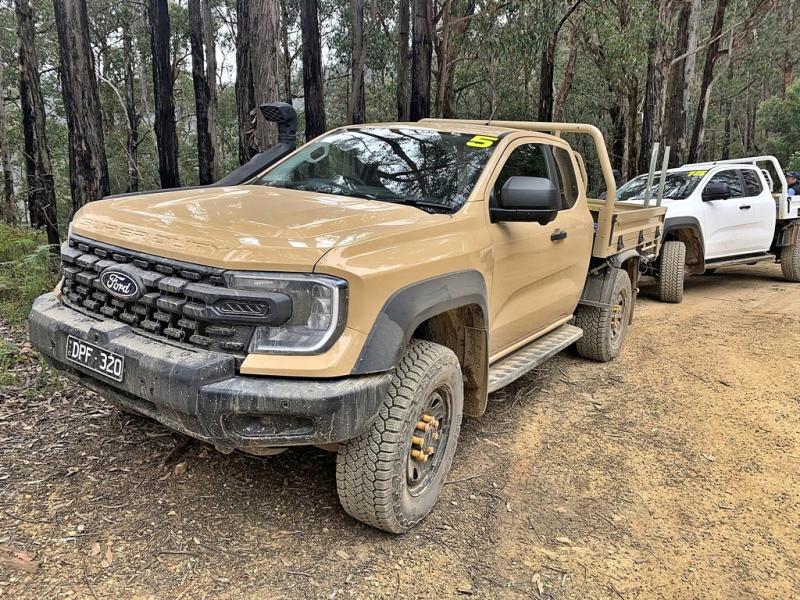In its latest face-lifted 8th generation (MY2021) version, has Toyota finally sorted out its Hilux conundrum?
NZ4WD mag Editor Ross MacKay thinks it just might have!
Fickle is hardly a word I’d use to describe local Toyota Hilux owners. Yet, many were driven to seek pastures new when the first of the then new seventh-generation model arrived here in 2004.
The problem - and the irony here is not lost on those who relate the tale – is that the Hilux buying group was one of the most profiled and ‘market researched’ at the time…and the message apparently from them, was clear... they wanted their new Hilux to be ‘more car-like’ than the one they already owned, had owned, or had long admired from afar.
As it turned out Toyota was thinking along the same lines, it’s ambitious ‘Innovative International Multi-purpose Vehicle’ (IMV) project seeing it develop five new models from what in effect was the single platform; three Hilux Utilities, one SUV (the Fortuner) and one Minivan (the Innova).
The Gen-7 Hilux was also the first to no longer be built exclusively in Japan… production moving to Thailand, South Africa and Argentina.
Wrong turn?
Oh how the accountants must have rejoiced… until the reality of many of the changes made at their behest started coming home to roost. To whit; in heading down the road of ‘more car-like features’ Toyota had – apparently – softened the Hilux up to the point where it would no longer stoically take the abuse handed out to it by those who had bought into the legend established (here as much as anywhere thanks to the ‘Crumpy’ series of TV ads) by the supposedly ‘unbreakable’ Series four, five and sixth Gen models.
For most buyers the Gen-7 model was indeed a major step forward, with convenience features like power steering now standard across the range and carpet instead of rubber on the floor of the up-spec models.
For a small, but vocal minority, however, Gen-7 was the straw that literally broke the camel’s back….or auto transmission, or injectors, etc.
It wasn’t just punters who were pissed off with the changes Toyota had made to its top-seller either. I know, Toyota NZ execs also felt ‘let down’ as they dealt with the fall-out from a decision – or rather a series of decisions - which had such a serious effect on their own hard-won reputation for selling the most reliable vehicles in the land.
Which is a long and convoluted way to kick off the first ‘test report’ of the latest version (the third by my rough calculations, in as many years) of the current (i.e. 2015-now) Gen 8 model.
The final upgrade of the Gen-7 model produced what is arguably one of the best looking pre Gen-8 models but the other issue which blighted the model through its 11-year model life (the rear ride remained harsh and unyielding) meant that many prospective buyers did the unthinkable – and moved to Ford’s plush riding Ranger or VW’s SUV-like Amarok.
I know, a colleague of mine actually returned his Gen-7 Hilux to his leasing company early after his kids, all tucked up nicely in their child restraint seats in the back, both spilled their fizzy drinks once too often as their Dad drove over one of those nasty little wooden ripple strips exiting his local McDonald’s drive-through one evening.
Talking tough
So, there was a lot riding (if you’ll pardon the pun) of the arrival of the all-new Gen-8 model back in 2015. This time Toyota was talking tough(ness), yet the design it initially came up with was anything but, with a high and narrow grille setting it immediately apart from the deeper, broader nose cones of its immediate competitors.
Fortunately the new 2.8l diesel engine and 6-speed auto trans worked well together, the interior fitouts were – generally - well received, and the rear ride was... better, though still not quite in the Ranger or Amarok’s league.
The first ‘facelift’ in early 2018 helped sort the ‘issue’ of the front end styling out with deeper, wrap-around-style headlights and a larger top grille dropping lower, while some subtle re-working of spring rates finally saw some compliance introduced in the vertical plane at the rear.
And do you know what? Toyota was back – if not with a true market leader, at least with a contender. To a point where news of the latest (2020 for the 2021 model year) version actually took me by surprise.
New is a further nip ‘n tuck up front plus useful increases in both power (up 15 percent) and torque (11 percent).
There are 18 different (10 of which are 4WD) Hilux variants within four specification levels – WorkMate, SR, SR5 and top of the range SR5 Cruiser in the 2021 line-up.
With seven variations, the 4WD SR Hilux offers the most choice. All have the more powerful 2.8 litre turbo-diesel engine, but each configuration meets different requirements.
A Contender, NOT a pretender
I’ve now driven all 4WD models of the new-for-2021 Hilux line-up – except for the made-to-order Mako. And I’ve yet to ‘test’ the SR5 Cruiser (though I did get to drive one at the launch).
AS such I can now say – with some confidence – that, after several years where other manufacturers held the advantage Toyota is now at the very least, ‘back in the game.’
I was particularly impressed by the work-a-day DC/TD SR-spec 2.8 litre automatic which was put to work carrying a tray load of top soil one day, then myself and my MTB to the bike park, and myself and my wife Delia the local Mitre 10 Mega and Countdown Supermarket later the next.
As I (think I) remember pointing out in my initial launch review in the November issue last year the key improvements I noticed straight away were;
1) the cabin was quantifiably quieter, particularly at, er, higher speed on the nasty (cheaper option) chip seal rural councils seem to favour at the moment.
And
2) there was way less cabin/chassis shake, shudder/call it what you will than in virtually any other separate cab/chassis 4WD utility I have driven to date.
Both improved the experience of driving the Hilux day-to-day – in much the same way the re-jigged rear suspension made its own quantifiable change to the way the Hilux rode and (in particular) absorbed rather than rode rough-shod over your typical nasty little sharp edged ridge in the road after the 2018 facelift changes.
I also both noticed and appreciated the extra power and torque – on as well as off the road, with maximum torque now available across a wider range of 1600-2800rpm (auto) and 1400-3400rpm (manual).
The extra power and torque come courtesy of a larger turbo and a new common-rail injection system with a higher maximum fuel pressure of 250 MPa. The 1GD engine also got a redesigned cylinder-head gasket, strengthened cylinder block, new pistons and new exhaust manifold and gasket materials plus a reshaped water jacket, and a revised cooling fan.
Inside, the SR variants get a dark grey fabric seat and vinyl floor coverings. The SR5 variants add a carpet floor covering, while the SR5 Cruiser comes complete with two-tone dark grey and black perforated leather accented seats. PreRunner and 4WD double cabs have a 60/40 split base for the rear seat and a stowable armrest.
On SR, SR5, and SR5 Cruiser drivers can choose either normal drive mode, or two extra modes: ECO which reduces throttle response in favour of fuel economy and reduces power consumption for heating and cooling; and POWER to provide sharper acceleration response (which I am happy to report, it definitely DOES!
New to the 2021 Hilux is the rear automatic Limited Slip Differential, which is standard across all 4WD double cab variants, while Downhill Assist Control has been added to the manual SR double cab variants making it now standard across all 4WD double cab variants.
If the (AN)CAP fits!
The Hilux was tested extensively by the Australasian New Car Assessment Programme (ANCAP) as recently as 2019. The Five Star ANCAP safety-rated Hilux arrives with driver and passenger front and side airbags, driver’s knee, and curtain shield airbags.
All 2021 Hilux models now also come equipped as standard with the Toyota Safety Sense package which includes a Pre-Collision System with Autonomous Emergency Braking for vehicles, pedestrians and cyclists, Dynamic Radar Cruise Control, Lane Departure Alert with Yaw Assist and Road Sign Assist.
SR5 and SR5 Cruiser models now come with front and rear parking sensors. Trailer Sway Control also comes as standard on all variants, while Active Traction Control is standard on all 4WD models.
The Toyota Drive-away pricing includes all on road costs; WOF, registration, 1000kms of RUC, a full tank of fuel, the Toyota Care Service Advantage fixed price servicing package, floor mats, and three years or 100,000 kms warranty.






